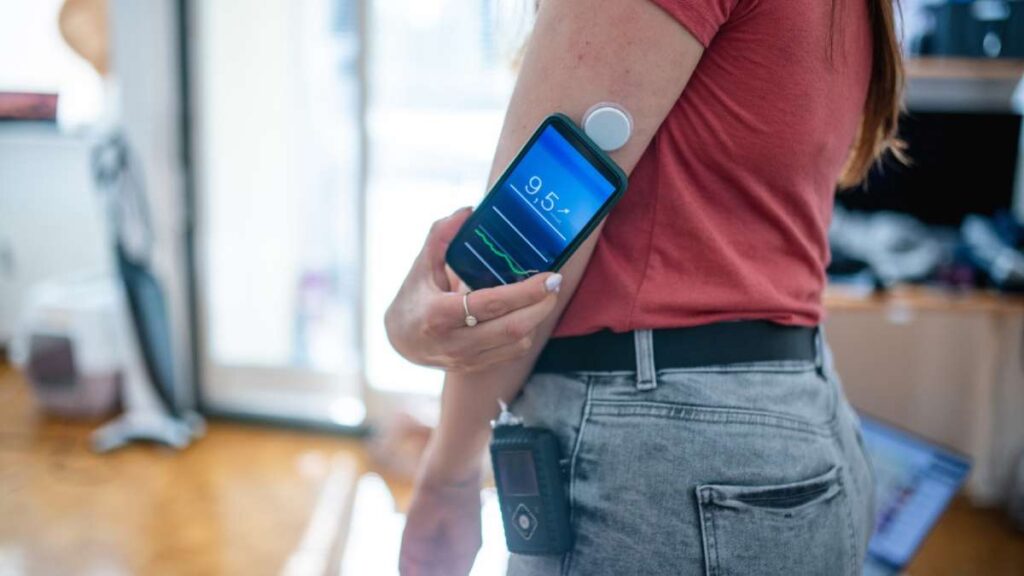From Buzz to Biohacking: CGM Devices Beyond Diabetes
Continuous glucose monitors (CGMs) have transcended their role in helping diabetics manage their condition. Now, health-conscious individuals and athletes seek their whispers of blood sugar data, hoping to optimize workouts and uncover metabolic truths.
But is this biohacking gold or glittering folly for those without diabetes? Let’s peel back the layers and analyze the allure and anxieties surrounding CGM Devices in the non-diabetic world.
Tip: Please fill out the form if you or a friend would like more information on CGM devices.
For Diabetics: A Revolutionary Melody
Imagine ditching finger pricks for a real-time symphony of blood sugar data. For diabetics, CGM Devices are not a fad, but a lifeline. They empower insulin adjustments, preventing life-threatening fluctuations. CGM Devices are their revolutionary melody, not just a trend.
For Non-Diabetics: A Murkier Landscape
The allure for non-diabetics is undeniable. Athletes dream of perfecting pre-race rituals and recovery strategies. Health enthusiasts envision personalizing diets and monitoring progress toward well-being goals. Optimizing workouts and fueling peak performance seem within reach.
Also, read about Diabetic Kidney Disease
Cautionary Horns: The Pitfalls of Overinterpretation
Yet, amid the excitement, experts raise their voices. They warn of:
- Misinterpreting the Melody: Blood sugar dips and climbs are normal in healthy bodies, not sirens. Misinterpretations, without proper guidance, can lead to unnecessary anxiety and even harmful dietary restrictions.
- Data Deluge, Information Drought: The constant data stream can become overwhelming, even addictive. We risk getting lost in the numbers, neglecting the true symphony of life.
- A Costly Tune: Replacing sensors biweekly translates to a hefty annual price tag. For most non-diabetics, the benefits may not justify the financial burden, especially considering the lack of conclusive long-term health impact data.
Must Read CGMs in noncritical care hospitals optimizes glycemic control
Finding the Right Rhythm: Embracing CGM Devices with Awareness
Should we abandon the CGM Devices siren song entirely? Not necessarily. Finding the right rhythm lies in approaching this technology with critical awareness. Embrace it as a potential tool for exploration, not a magic wand for health. Consider these:
- Prioritize Fundamentals: A balanced diet, regular exercise, and quality sleep remain the pillars of well-being. CGMs, if used, should complement these, not replace them.
- Seek Guidance: Consult healthcare professionals who can interpret data and offer personalized advice.
- Listen to Your Body: Don’t get lost in the numbers. Pay attention to how you feel, not just what the sensor says.
A Personal Choice: Weighing Risks and Rewards
Ultimately, the decision to wear a CGM Devices is a personal one. Before joining the chorus, listen carefully to the melody of your body and weigh the potential risks and rewards with a discerning ear.
Read Guide about Wegovy Dosage Guide: The Best Way For Weight Loss
Beyond the Hype: A Promising Future for CGM Devices
Looking beyond the current hype, the future of CGM Devices holds promise. Advancements in non-invasive technology and personalized data analysis could make them more accessible and relevant for a wider audience. But the key lies in ensuring they remain tools for empowerment, not anxiety-inducing conductors.
As Dr. Peter Senior reminds us,
“The goal shouldn’t be a flat line on your glucose monitor. The goal should be to live a healthy life.”
With responsible use and continued innovation, CGM Devices can contribute to this symphony, but never drown it out. Remember, a healthy life is more than a perfect blood sugar score. Let’s keep the music playing, but always with our own bodies leading the dance.


